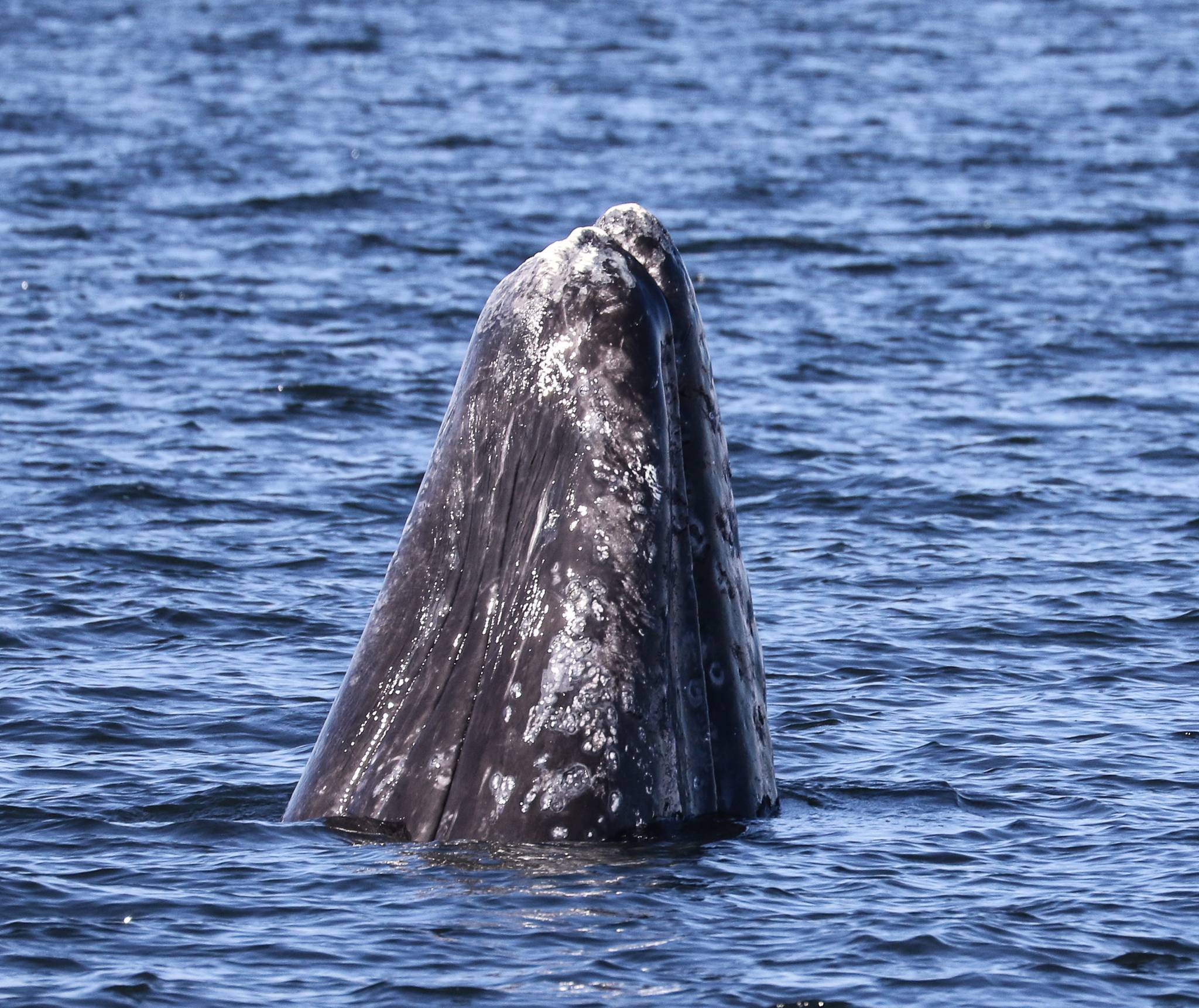Nature wows us at this time of year on Whidbey and Camano islands.
Each spring, enormous gray whales breach the surface of these beautiful marine waters and send a spray into the air, announcing their highly anticipated arrival.
Members of one group of gray whales known as the “Sounders” have returned to Saratoga Passage for roughly 30 years.
It’s a festive occasion —Langley even holds a parade — and there’s ample reason to celebrate. Island conservation is key to why these colossal cetaceans make the annual journey home.
The Sounder whales, which number about 12, hold Whidbey and Camano waters in high regard. They’ll pause along their coastal migration to detour more than 150 miles inland to feed in the North Puget Sound waters next to Whidbey and Camano. They’re mostly seeking the abundant ghost shrimp found burrowed in mudflats.
The gray whales wait for high tide and gorge themselves on the meaty crustaceans.
Near-shore habitat and marine conditions found in Saratoga Passage, Port Susan and Possession Sound are optimal for the thriving ghost shrimp, according to Ralph Downes, enforcement officer with the Washington Department of Fish and Wildlife.
“We get the largest concentration of gray whales feeding here because of the substrate and the presence of the shrimp,” Downes said. “One of the reasons we have so many shrimp is the nutrient-rich water that comes out of the Stillaguamish, Snohomish and Skagit rivers but the most important thing is the beach — the sandy, shallow gradient where burrowing shrimp can live.”
Add in the fact that the tidal flow and wave action in Saratoga Passage and Possession Sound is mild compared to much of Puget Sound – allowing sediments to settle rather than get carried away – and you start to understand why ghost shrimp are so densely populated in this one area. The Sounders eat hundreds of pounds of them a day while hanging out near the shores of Whidbey and Camano between March and May.
This web of interdependence between one of the ocean’s largest creatures and one of its smallest illustrates why naturally-functionally shorelines matter – and why preserving them is so vital.
Clean Waters Depend on Healthy Lands
The Whidbey Camano Land Trust has permanently protected roughly 15 miles of natural shoreline and more than 3,000 acres of tidelands in Island County, including a half-mile stretch of beach at Possession Sound Preserve, south of Clinton. Once conserved, stewardship staff lead efforts to restore shorelines to their natural state whenever possible.
In 2015, the Land Trust partnered with the Washington Department of Natural Resources to remove a creosote-treated wooden bulkhead at the Waterman Shoreline Preserve in Possession Sound that cut off sediment supply to the beach.
Eroding feeder bluffs that provide sediment play a critical role in near-shore habitats. They replenish the beach and tidelands with sand, gravel and nutrients, enriching habitat essential for marine life including crabs, shrimp, endangered Chinook salmon, orca and gray whales.
The health of nearby forests and lands also contribute to water quality in Puget Sound.
“The productivity of the upland areas is an important part of the whole process,” said Dan Matlock, Land Trust board member and retired college biology professor. “The shading of beaches for forage fish spawning, the insect rain (insects that fall into the water from nearby shores and vegetation), shorebird nesting and feeding habitat, and water filtration are all part of the whole picture.”
Howard Garrett, co-founder of the nonprofit Orca Network, agrees that all of those factors are making a difference in providing healthier habitats for fish and wildlife.
“It certainly does to those dozen or so gray whales that come back every year,” Garrett said with a laugh.
Garrett said he takes pride in being part of an island community that is passionate about the well-being of whales and cares so much about the overall environment. His organization is dedicated to raising awareness about Pacific Northwest whales and the importance of providing them healthy and safe habitats.
While resident orca whales are struggling due to dwindling salmon populations, the number of gray and humpback whales in Puget Sound is increasing. That’s good news for one special group of grays that find that the shrimp bounty around Whidbey and Camano is worth taking a detour.
• The Whidbey Camano Land Trust is a non-profit nature conservation organization that actively involves the community in protecting, restoring and appreciating the important natural habitats and resource lands that support the diversity of life on our islands and in the waters of Puget Sound. For information, visit www.wclt.org, email info@wclt.org, or call 360.222.3310.



